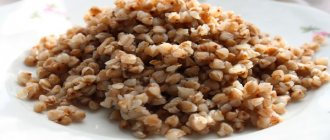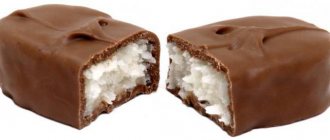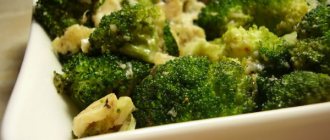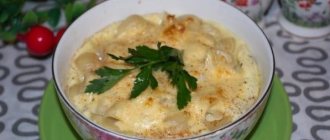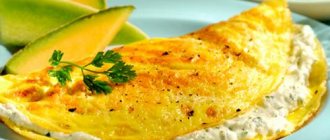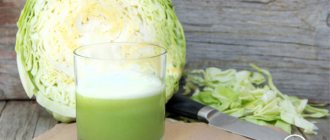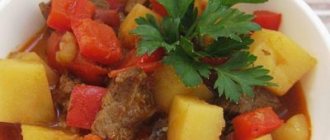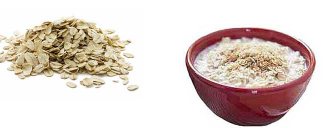How to whip egg whites into foam: tips
- The eggs need to be cooled before beating. Place them in the refrigerator until ready to cook. It is best that the bowl for whipping the egg whites is also cold - this will help complete cooking faster and the foam will be stronger.
- When you have cooled the eggs, carefully break them 1 at a time over a separate container. Make sure that the yolk does not get into the bowl, otherwise the foam will not be fluffy enough. If a shell accidentally gets into it, carefully remove it.
- The mixing bowl must be absolutely clean and dry (cold if possible). Choose a deep enough bowl or pan, as the mass will increase several times during the cooking process.
- Pour the egg whites into a bowl and beat them with a wire whisk, making even movements in one direction. When the mass begins to increase in volume and the bubbles become small, start adding sugar in small portions. At the end of whipping, add citric acid or a few drops of lemon juice. Thanks to the acid, the foam will become more flexible.
- Properly whipped whites are a fairly fluffy and dense mass. If after 10 minutes of whipping you still cannot achieve high foam, place the container with the ingredients in a pan of ice water while continuing to whip.
- You can make meringues or meringues from the finished foam. To do this, place it by the tablespoon on a baking sheet lined with parchment paper. If you have a pastry syringe, you can use it to form the meringues. When prepared correctly, the protein mass holds its shape well and does not spread on the baking sheet. Meringues are baked at a low temperature; during baking, it should be increased.
- If you put the meringues in a hot oven, they will turn brown, and if you take them out too early, the middle will be soggy. Therefore, the dessert is cooked at 80 - 100 degrees for about 1 hour. When the time is up, you can turn off the oven and leave the dish until it cools. This way the meringues will definitely not burn and will bake well. The finished dessert can be glued together in 2 pieces using jam, condensed milk or cream.
Basics
Protein, as a food biochemical substance, is afraid of moisture, fat, debris and dust. Therefore, if your goal is perfectly whipped whites, be careful when separating the whites from the yolk, because this procedure also requires some skill and precision.
If the yolk or shell gets into the white, the process may not work. Clean, dry dishes are the main and indispensable condition for thoroughly whipping the egg whites and sugar.
The freshest or, on the contrary, stale eggs can disrupt the entire cooking technology, so it is optimal to use eggs that are two weeks old. After the preparatory activities are completed, the eggs should be allowed to reach room temperature. Cold or chilled egg whites do not whip well.
How to make eggnog?
Gogol-mogol is a fairly popular drink in our country. It is based on chicken eggs, other ingredients are added to obtain the desired taste. Thanks to fresh eggs, eggnog contains a number of vitamins and minerals that are beneficial to health and have a healing effect.
The main vitamins contained in the drink: A, C, D, B3 and B12, minerals - iodine, calcium, phosphorus, magnesium, iron, zinc and selenium. In addition to vitamins and minerals, the drink contains amino acids.
Gogol-mogol is usually used to treat coughs, sore throats, loss of voice, colds, respiratory diseases and sore throats. Eating dessert prevents the occurrence of cardiovascular diseases, the formation of cancerous tumors, strengthens bones and teeth, improves vision, hair and nails.
The drink is also recommended for people who are underweight. Despite its low calorie content, it saturates the body with animal fats and protein, which promotes weight gain.
Meringue with lavender cream and blackberries
Recipe by Andrey Korobyak, chef of the YURA restaurant
(for lavender cream)
- Cream 33% – 250 ml
- Milk – 250 ml
- Dry lavender – 2 g
- Eggs - 1 pc.
- Granulated sugar - 90 g
- Starch - 25 g
- Flour - 25 g
- Butter - 35 g
- Whipped cream - 650 ml
- Combine cream and milk, add dry lavender leaves and heat. Let it brew for 30 minutes and strain. Mix eggs, sugar, starch and flour in a bowl and dilute with a small portion of cream.
- Place on the stove and cook with constant stirring until thickened. Remove from heat, add softened butter and mix thoroughly until smooth.
- Cool quickly, add whipped cream and whisk until smooth.
Delicious recipe! Salmon with cheese in the oven recipes
For blackberries:
- Blackberries – 400 g
- Honey - 80 g
- Juniper berries - 2 g
- Starch - 5 g
- Place blackberries, honey and juniper berries in a bowl and leave in the refrigerator for 12 hours. Then strain, put on the stove and bring to a boil.
- Brew the starch previously diluted in blackberry juice and cook with constant stirring until thickened. Add blackberries, bring to a boil and remove from heat.
For the meringue:
- Chicken proteins - 110 g
- Granulated sugar - 110 g
- Powdered sugar - 55 g
- Food coloring – 5 g
- Beat the whites in a mixer with sugar until fluffy and white. Add powdered sugar and continue beating until smooth. Pour the mixture through a pastry bag onto the mat. Bake at 80℃ for 1.5 hours. Let it cool.
- Chop the meringue into fragments. Spread lavender cream on top. Lay out the blackberries. Garnish with fresh blueberries, lemon zest and pistachios.
Hirst Shkulev Publishing
Moscow, st. Shabolovka, building 31b, 6th entrance (entrance from Konny Lane)
All the secrets and detailed descriptions of cooking in the oven, microwave and slow cooker.
Recipe: Whipped protein. Calorie, chemical composition and nutritional value.
Nutritional value and chemical composition of “Whipped protein”.
The table shows the nutritional content (calories, proteins, fats, carbohydrates, vitamins and minerals) per 100 grams of edible portion.
| Nutrient | Quantity | Norm** | % of the norm in 100 g | % of the norm in 100 kcal | 100% normal |
| Calorie content | 25.4 kcal | 1684 kcal | 1.5% | 5.9% | 6630 g |
| Squirrels | 5.5 g | 76 g | 7.2% | 28.3% | 1382 g |
| Fats | 0.1 g | 56 g | 0.2% | 0.8% | 56000 g |
| Carbohydrates | 0.8 g | 219 g | 0.4% | 1.6% | 27375 g |
| Alimentary fiber | 0.3 g | 20 g | 1.5% | 5.9% | 6667 g |
| Water | 93 g | 2273 g | 4.1% | 16.1% | 2444 g |
| Ash | 0.364 g | ~ | |||
| Vitamins | |||||
| Vitamin B1, thiamine | 0.002 mg | 1.5 mg | 0.1% | 0.4% | 75000 g |
| Vitamin B2, riboflavin | 0.306 mg | 1.8 mg | 17% | 66.9% | 588 g |
| Vitamin B4, choline | 19.45 mg | 500 mg | 3.9% | 15.4% | 2571 g |
| Vitamin B5, pantothenic | 0.12 mg | 5 mg | 2.4% | 9.4% | 4167 g |
| Vitamin B6, pyridoxine | 0.008 mg | 2 mg | 0.4% | 1.6% | 25000 g |
| Vitamin B9, folates | 0.752 mcg | 400 mcg | 0.2% | 0.8% | 53191 g |
| Vitamin B12, cobalamin | 0.04 mcg | 3 mcg | 1.3% | 5.1% | 7500 g |
| Vitamin E, alpha tocopherol, TE | 0.004 mg | 15 mg | 375000 g | ||
| Vitamin H, biotin | 3.475 mcg | 50 mcg | 7% | 27.6% | 1439 g |
| Vitamin RR, NE | 1.5028 mg | 20 mg | 7.5% | 29.5% | 1331 g |
| Niacin | 0.099 mg | ~ | |||
| Macronutrients | |||||
| Potassium, K | 81.33 mg | 2500 mg | 3.3% | 13% | 3074 g |
| Calcium, Ca | 9.67 mg | 1000 mg | 1% | 3.9% | 10341 g |
| Magnesium, Mg | 5.35 mg | 400 mg | 1.3% | 5.1% | 7477 g |
| Sodium, Na | 94.52 mg | 1300 mg | 7.3% | 28.7% | 1375 g |
| Sera, S | 93.66 mg | 1000 mg | 9.4% | 37% | 1068 g |
| Phosphorus, Ph | 14 mg | 800 mg | 1.8% | 7.1% | 5714 g |
| Chlorine, Cl | 86.09 mg | 2300 mg | 3.7% | 14.6% | 2672 g |
| Microelements | |||||
| Iron, Fe | 0.096 mg | 18 mg | 0.5% | 2% | 18750 g |
| Yod, I | 3.48 mcg | 150 mcg | 2.3% | 9.1% | 4310 g |
| Cobalt, Co | 0.496 mcg | 10 mcg | 5% | 19.7% | 2016 |
| Manganese, Mn | 0.0079 mg | 2 mg | 0.4% | 1.6% | 25316 g |
| Copper, Cu | 30.16 mcg | 1000 mcg | 3% | 11.8% | 3316 g |
| Molybdenum, Mo | 2.78 mcg | 70 mcg | 4% | 15.7% | 2518 g |
| Selenium, Se | 9.967 mcg | 55 mcg | 18.1% | 71.3% | 552 g |
| Fluorine, F | 49.65 mcg | 4000 mcg | 1.2% | 4.7% | 8056 g |
| Chromium, Cr | 1.49 mcg | 50 mcg | 3% | 11.8% | 3356 g |
| Zinc, Zn | 0.1212 mg | 12 mg | 1% | 3.9% | 9901 g |
| Digestible carbohydrates | |||||
| Mono- and disaccharides (sugars) | 0.8 g | max 100 g | |||
| Essential amino acids | |||||
| Arginine* | 0.309 g | ~ | |||
| Valin | 0.371 g | ~ | |||
| Histidine* | 0.125 g | ~ | |||
| Isoleucine | 0.314 g | ~ | |||
| Leucine | 0.46 g | ~ | |||
| Lysine | 0.339 g | ~ | |||
| Methionine | 0.204 g | ~ | |||
| Methionine + Cysteine | 0.343 g | ~ | |||
| Threonine | 0.24 g | ~ | |||
| Tryptophan | 0.085 g | ~ | |||
| Phenylalanine | 0.334 g | ~ | |||
| Phenylalanine+Tyrosine | 0.531 g | ~ | |||
| Nonessential amino acids | |||||
| Alanin | 0.347 g | ~ | |||
| Aspartic acid | 0.505 g | ~ | |||
| Glycine | 0.196 g | ~ | |||
| Glutamic acid | 0.752 g | ~ | |||
| Proline | 0.201 g | ~ | |||
| Serin | 0.379 g | ~ | |||
| Tyrosine | 0.199 g | ~ | |||
| Cysteine | 0.139 g | ~ | |||
| Monounsaturated fatty acids | 0.001 g | min 16.8 g | |||
| 18:1 Oleic (omega-9) | 0.001 g | ~ | |||
| Polyunsaturated fatty acids | 0.002 g | from 11.2 to 20.6 g | |||
| 18:2 Linolevaya | 0.001 g | ~ |
The energy value of whipped protein is 25.4 kcal.
Primary Source: Created in the application by the user. Read more.
** This table shows the average levels of vitamins and minerals for an adult. If you want to know the norms taking into account your gender, age and other factors, then use the “My Healthy Diet” application.
Under what conditions should it be stored?
The best way to preserve eggs is to make them “untouchable”, that is, leave them in an intact shell at a temperature of +2°C -+4°C for 4 weeks from the moment they are born. If the integrity of the shell is compromised, the shelf life of the whites will be reduced to 5 days, even if they are separated from the yolks and are under normal storage conditions.
Storing proteins in the refrigerator or freezer is the safest way. But in this case, much will depend on their type (fresh, whipped with or without sugar, boiled).
How to cook meringue in the oven
This is a classic method that makes the meringue airy and beautiful.
Ingredients
- 3 egg whites;
- 180 g powdered sugar.
What else can you add to meringue?
The taste and appearance of classic meringue will help you diversify:
- vanillin;
- cinnamon;
- food extracts or flavors (vanilla, almond, mint, fruit, etc.);
- food coloring (gel coloring will make the meringue more shiny, and powder coloring will make it matte);
- chopped nuts;
- cocoa;
- coconut flakes.
They are added to the protein mass at the end of cooking.
But be careful. Oils (such as in nuts) and liquids can interfere with foam formation. Therefore, it is better to add just a little bit than to overdo it and ruin the meringue.
Delicious recipe! Closed pie with cabbage and minced meat
If you want to add food flavorings, never use ones that contain alcohol. It will also prevent the squirrels from rising.
Preparation
Separate the whites from the yolks. Beat the egg whites with a mixer at low speed for about 30 seconds. When the whites just begin to foam, increase the speed to medium and beat until thick white foam forms.
Then gradually add powdered sugar. Turn off the mixer and stir the meringue base with a spoon, collecting any protein from the sides that has splashed during the beating process.
After this, beat for a few more minutes at high speed. You should get a thick foam of uniform consistency. You can, oddly enough, check the readiness of the meringue base by lifting the container with it upside down: the protein mass should remain in place.
Place the finished base in a cooking bag. You can get by with an ordinary spoon, but the dessert will not be as beautiful.
Preheat oven to 100°C. Line a baking sheet with parchment paper and form the meringue onto it.
Place the baking sheet in the oven on the middle rack for 1-1.5 hours. Cooking time depends on the size of the meringue: the smaller they are, the faster they will be ready. For meringues that are too large, it will take about 2 hours.
Do not open the oven during cooking. Due to temperature changes, the meringue may crack. The finished meringue should easily separate from the parchment.
After cooking, turn off the oven, open the door slightly and leave the meringue inside until completely cooled for several hours.
